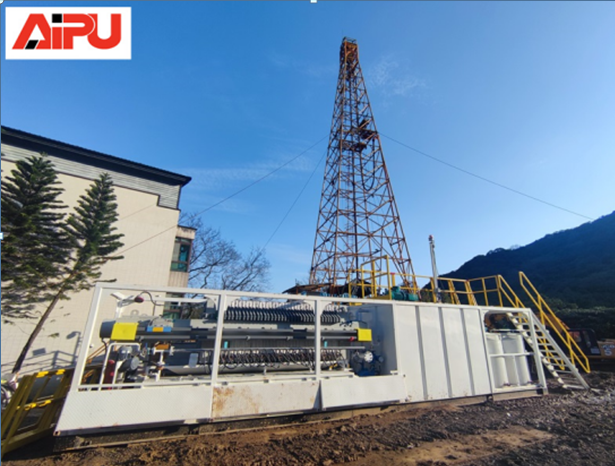How Solids Control Systems Optimize Drilling Projects
In the realm of drilling operations, especially in tough terrains, the solids control system plays a pivotal role. These challenging landscapes, such as deep - sea beds, arid deserts, and mountainous regions, present unique obstacles that demand advanced solutions for successful drilling.
The Function of Solids Control System
The primary function of a solids control system is to separate cuttings and other solid particles from the drilling fluid. In tough terrains, the drilling fluid is often subjected to high - pressure and high - temperature conditions, and it can pick up a large amount of solid debris. By removing these solids, the system helps maintain the properties of the drilling fluid, such as its density and viscosity. This is crucial because the proper characteristics of the drilling fluid are essential for wellbore stability, efficient cuttings transport, and protection of the drilling equipment.
Components of the Solids Control System
A typical solids control system consists of several key components. The shale shaker is the first line of defense. It uses vibrating screens to separate large cuttings from the drilling fluid. Next is the desander, which removes sand - sized particles through a hydrocyclone mechanism. The desilter, similar to the desander, is designed to eliminate finer particles. Centrifuges are also an important part of the system. They use centrifugal force to separate very fine solids and can be adjusted to achieve different levels of separation efficiency. Each of these components works in sequence to ensure a thorough cleaning of the drilling fluid.
Benefits in Tough Terrains
In tough terrains, the benefits of a solids control system are far - reaching. In deep - sea drilling, for example, the system helps prevent the accumulation of solids that could cause blockages in the wellbore or damage the subsea equipment. In desert areas, where water is scarce, the efficient reuse of drilling fluid made possible by the solids control system reduces the need for large amounts of fresh water. In mountainous regions, the system improves the overall drilling speed and reduces the risk of wellbore instability, which is often exacerbated by the complex geological structures.
Technological Advancements
Recent technological advancements have further enhanced the performance of solids control systems. Automation has been introduced to monitor and adjust the operation of the system in real - time. This allows for more precise control of the separation process and reduces the need for manual intervention. New materials for screens and cyclones have also been developed, which offer better wear resistance and longer service life. Additionally, advanced software can analyze the composition of the drilling fluid and the separated solids, providing valuable data for optimizing the drilling process in tough terrains.
In conclusion, the solids control system is an indispensable part of drilling operations in tough terrains. Its functions, components, benefits, and continuous technological improvements all contribute to driving the progress of drilling in these challenging environments.

The Function of Solids Control System
The primary function of a solids control system is to separate cuttings and other solid particles from the drilling fluid. In tough terrains, the drilling fluid is often subjected to high - pressure and high - temperature conditions, and it can pick up a large amount of solid debris. By removing these solids, the system helps maintain the properties of the drilling fluid, such as its density and viscosity. This is crucial because the proper characteristics of the drilling fluid are essential for wellbore stability, efficient cuttings transport, and protection of the drilling equipment.
Components of the Solids Control System
A typical solids control system consists of several key components. The shale shaker is the first line of defense. It uses vibrating screens to separate large cuttings from the drilling fluid. Next is the desander, which removes sand - sized particles through a hydrocyclone mechanism. The desilter, similar to the desander, is designed to eliminate finer particles. Centrifuges are also an important part of the system. They use centrifugal force to separate very fine solids and can be adjusted to achieve different levels of separation efficiency. Each of these components works in sequence to ensure a thorough cleaning of the drilling fluid.
Benefits in Tough Terrains
In tough terrains, the benefits of a solids control system are far - reaching. In deep - sea drilling, for example, the system helps prevent the accumulation of solids that could cause blockages in the wellbore or damage the subsea equipment. In desert areas, where water is scarce, the efficient reuse of drilling fluid made possible by the solids control system reduces the need for large amounts of fresh water. In mountainous regions, the system improves the overall drilling speed and reduces the risk of wellbore instability, which is often exacerbated by the complex geological structures.
Technological Advancements
Recent technological advancements have further enhanced the performance of solids control systems. Automation has been introduced to monitor and adjust the operation of the system in real - time. This allows for more precise control of the separation process and reduces the need for manual intervention. New materials for screens and cyclones have also been developed, which offer better wear resistance and longer service life. Additionally, advanced software can analyze the composition of the drilling fluid and the separated solids, providing valuable data for optimizing the drilling process in tough terrains.
In conclusion, the solids control system is an indispensable part of drilling operations in tough terrains. Its functions, components, benefits, and continuous technological improvements all contribute to driving the progress of drilling in these challenging environments.








